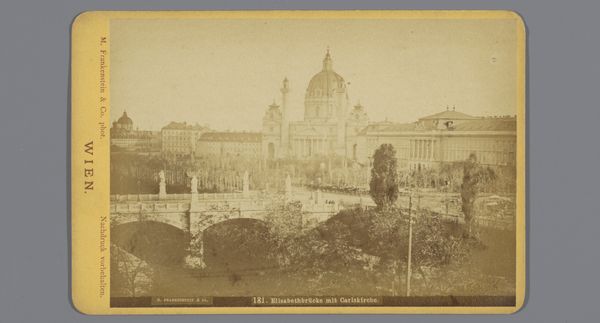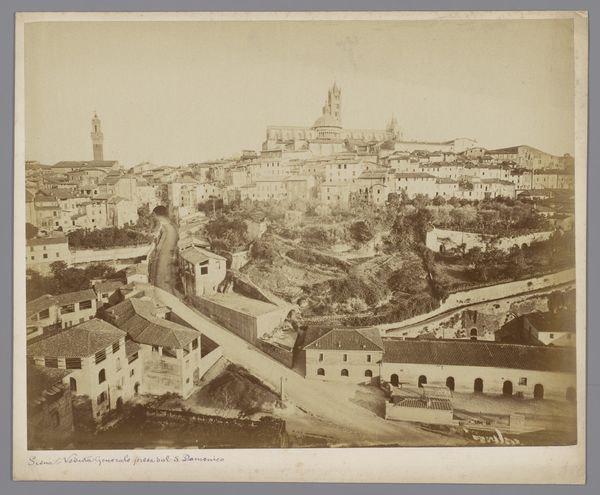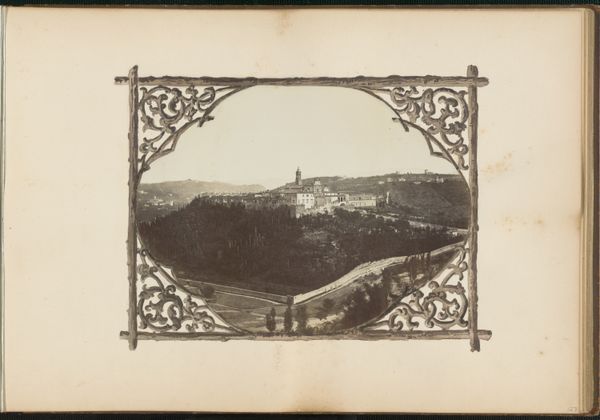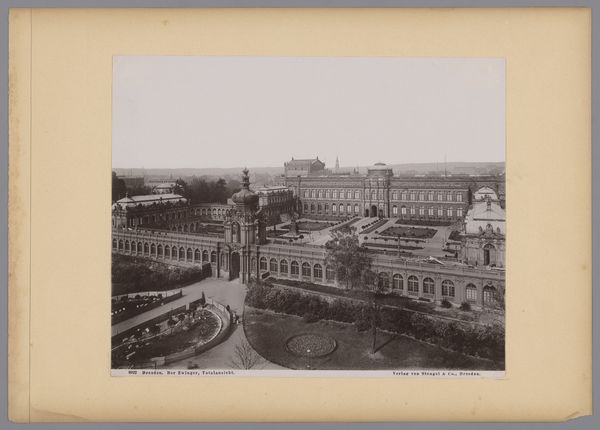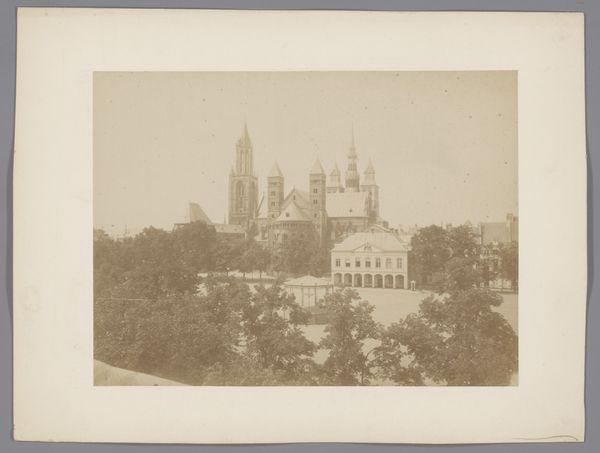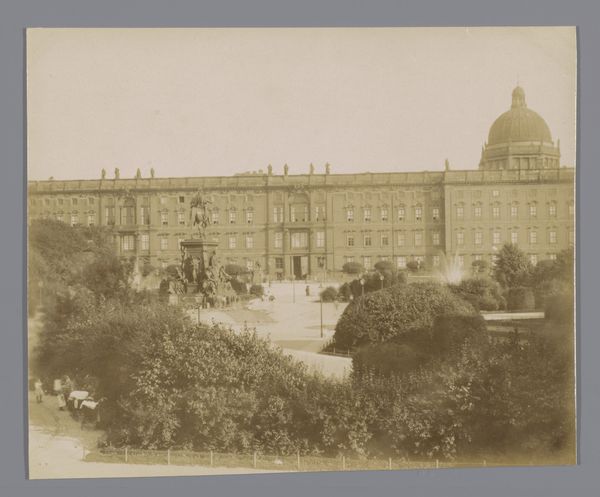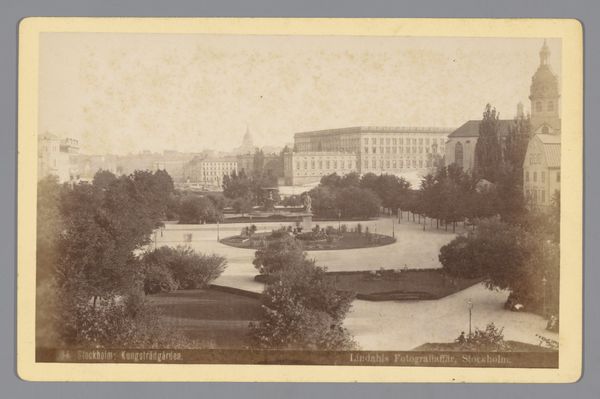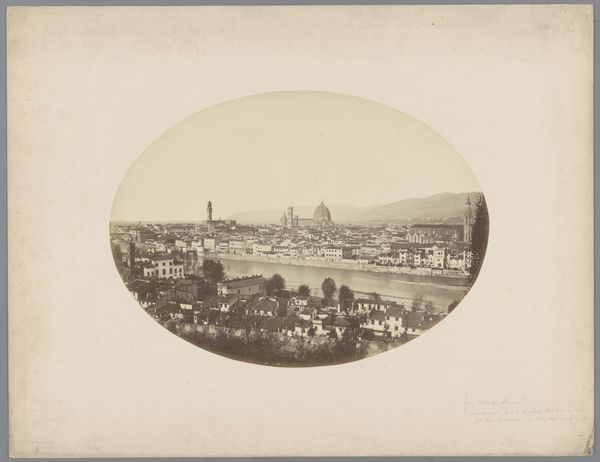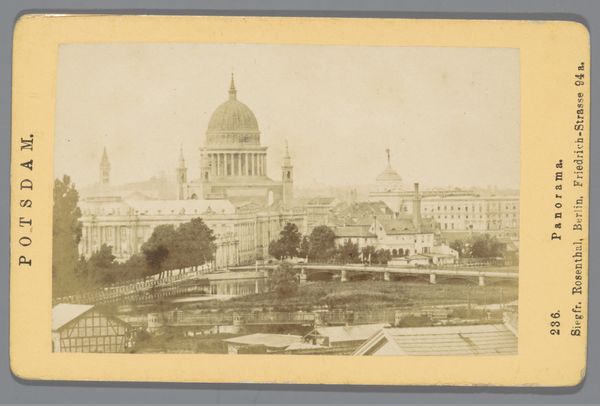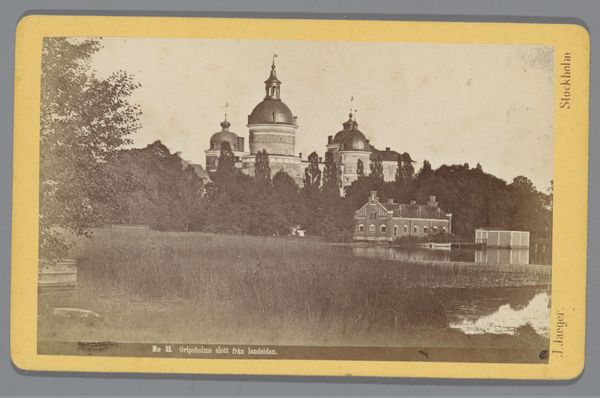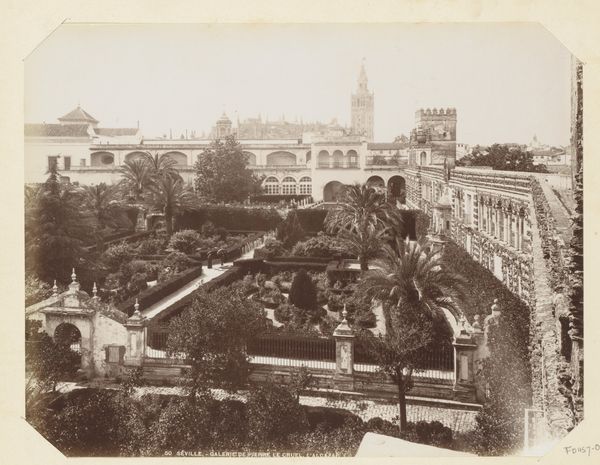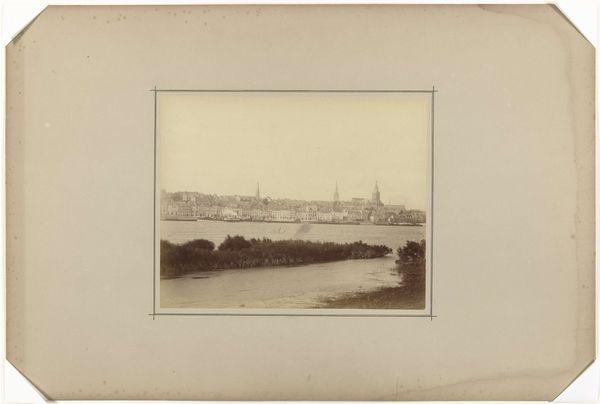
Dimensions: height 65 mm, width 105 mm
Copyright: Rijks Museum: Open Domain
Editor: So, this albumen print, "Gezicht op Wenen," by M. Frankenstein & Co., circa 1868-1875, it’s quite striking how the dense trees in the foreground frame the cityscape. It feels almost staged. What’s your interpretation? Curator: It's fascinating how these early photographs, particularly cityscapes, operate as both documentation and construction. Considering the period – the latter half of the 19th century – Vienna was a burgeoning imperial capital, but also a site of significant social tension. Doesn’t the framing suggest something about power and perspective, about who gets to see and represent the city? Editor: Power and perspective, yes. The viewer is positioned *outside*, almost looking *down* on the city. Curator: Precisely. Who held the photographic gaze during this period? Whose stories were being told, and whose were being left out of the frame? The image almost sanitizes Vienna, doesn't it, concealing the socio-political undercurrents simmering beneath the surface of this seemingly idyllic view. Think about the lives of the working class in the shadows of these grand buildings, the unequal distribution of wealth and influence. Does the photograph acknowledge any of that? Editor: Not at all. It's a very selective view. It makes you wonder what was happening just beyond the edges of the frame. Curator: Exactly. And that's where the real power of art history lies, in excavating those hidden narratives and questioning the dominant narratives that works like this reinforce. We must challenge whose history we see. Editor: I see the photograph with entirely different eyes now. Thanks for drawing those deeper social meanings.
Comments
No comments
Be the first to comment and join the conversation on the ultimate creative platform.
